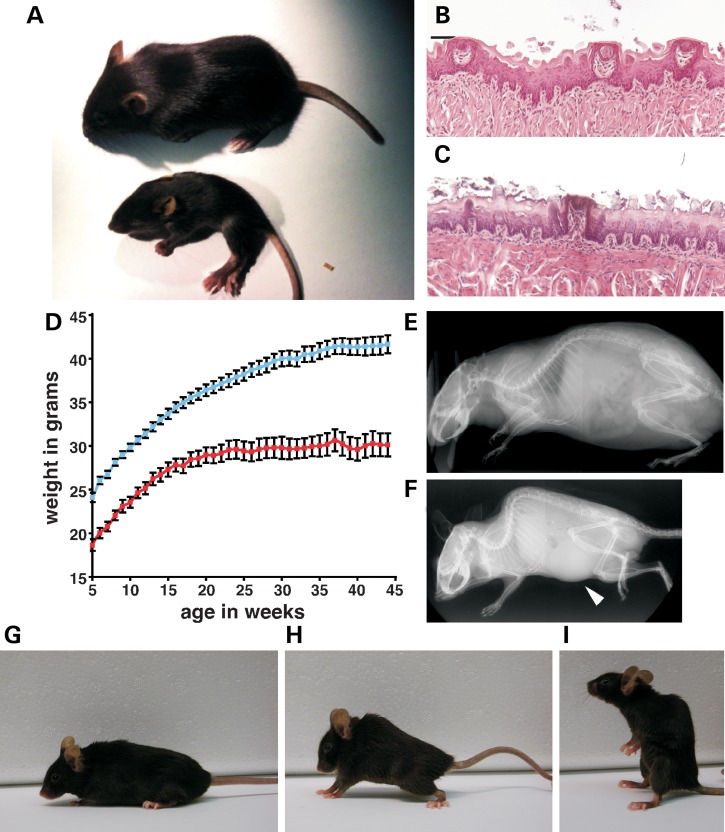Figure 2.
Postnatal characteristics of IkbkapΔ20/flox and Ikbkapflox/flox mice. (A) Appearance of IkbkapΔ20/flox mice at P18. WT (top) and IkbkapΔ20/flox (bottom) littermates were photographed side by side. Note that the mutant IkbkapΔ20/flox mouse is significantly smaller than its WT littermate and exhibits abnormal posture and puffy feet. (B and C) Representative histological examinations of tongue fungiform papillae. Tongues of P18 WT (B) and IkbkapΔ20/flox (C) littermates were processed for paraffin embedding, and coronal sections of the anterior part of the tongue were stained with H&E. Note that the three fungiform papillae of the WT littermates appear normal (B), whereas in the mutant the fungiform papilla shown is degenerating (C). (D) Postnatal growth curves of control (blue, n = 37) and Ikbkapflox/flox (red, n = 14) male mice. Similar results were found for female mice. Data are represented as mean ± SEM. (E and F) MicroCT scans of 11-month-old WT (E) and IkbkapΔ20/flox (F) littermate male mice. Note that the mutant is significantly smaller than the control and displays a severe curvature of the spine (kyphosis). In this scan, a significant enlargement of the bladder is also observed in the mutant (arrowhead). (G–I) 16-month-old WT (G) and Ikbkapflox/flox (H and I) female littermates. Note the spinal curvature of the mutant (H) and the sitting-up posture (I) that it assumes frequently.

